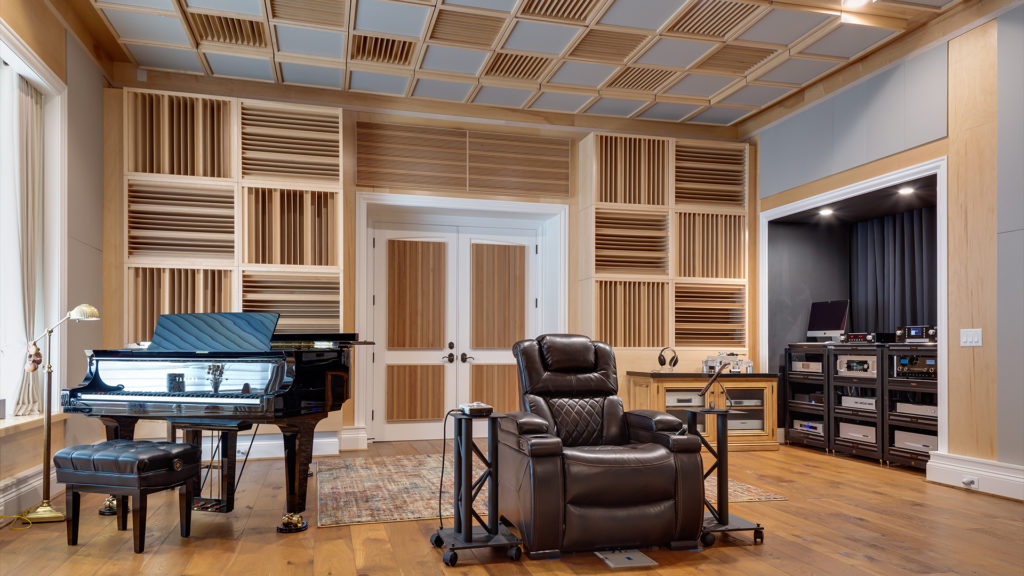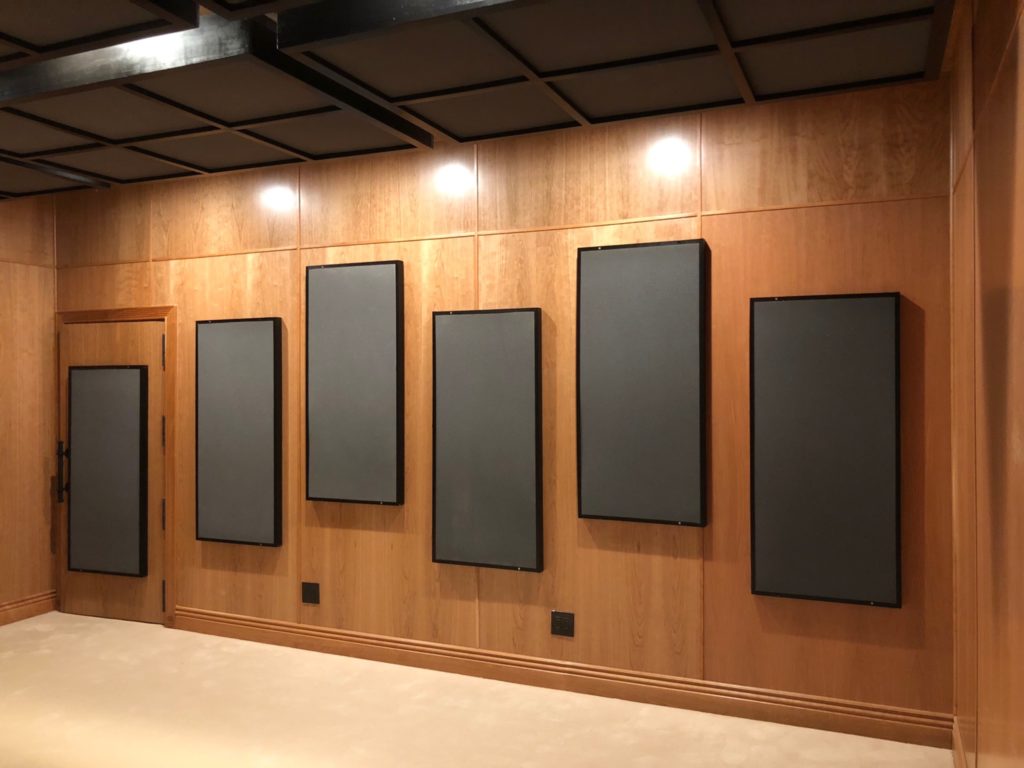
Table of Contents
Understanding Room Acoustics Treatment: Low vs. High Frequencies
Room acoustics treatment comes in two main flavors. We have low frequency treatment types along with middle and high frequency treatments. They are completely different treatment types to address two completely different types of energy. Low frequency issues are wave energies. Middle and high frequency energies are ray energy.
When you think of low frequency energy within your room, you should think of ocean waves. Low frequency energy is waves of energy that oscillate throughout your room in a series of waves. Middle and high frequency energy is ray energy which functions more like sunshine. It is straight line energy that does not oscillate.

Low Frequency Energy: The Challenge of Room Modes
Any form of room acoustics treatment must take into account these two main energy types. Low frequency issues are a pressure based energy that fills the room with sound pressure. Think of attaching an air hose to your room and filling it full of air pressure. This is how low frequency energy exists within your room. If there is too much energy at any room location, you will have excess pressure based upon the frequency and amplitude of the energy placed into the room.
With lower frequency energy below 100 hz. you have long wavelengths of energy. A 30 hz. wave which is a low frequency energy, we have a wavelength that is 38′ long. How many rooms have a 38′ dimension? Most do not have this frequency of 30 hz. will not fit into room dimensions that are 15, 20, or 25′ in length. When lower frequency energy does not fit into the dimensions of your room, room modes occur.

Managing Low Frequency Issues for Better Room Resolution
Room modes are unwanted pressure pockets that exist throughout your room. They can be every 36 – 48″ throughout your room. You can not hide from them or position yourself out of them. Room modes are the opposite of resolution. They overcite the air that is trapped between the room walls and do two major things to our sound quality.
They over emphasize certain frequencies and they can completely eliminate others. Neither of these qualities is welcome in our rooms if our ultimate goal is a higher than average room resolution. The goal with any critical listening room is to minimize the modal issues through the proper type, amount, and position of the room acoustics treatment.

Middle and High Frequency Treatment with Acoustic Foam
Once you have the low frequency issues managed correctly, you can move on to the middle and high frequency room acoustics treatment. Middle and higher frequency absorption technology for treating middle and high frequency issues is open celled foams. Foams provide a proper rate and level of absorption for music and voice along with lower manufacturing costs than other technology types. Our foam technology, took 8 years to develop at a cost of 2M.
It has the proper rate and level of absorption for music and voice. Refer to the graphic showing the smooth rate of absorption with Acoustic Fields‘ foam, compared to the uneven response curves of the other manufacturers. Music and voice require a smooth and even rate of absorption in order to avoid phase issues.

The Role of Diffusion in Expanding Perceived Room Size
Diffusion is another room acoustics treatment that treats middle and high frequencies. When we are dealing with middle and high frequency ray energy, we must manage the time signature of reflections. We must reduce the amount of the reflection from the walls and ceilings when we are considering any room acoustic treatment.
Diffusion in simple terms takes the energy that strikes the wall surfaces within your room and breaks those reflections into a series of smaller reflections. Smaller reflections are more difficult for the brain to localize and the room takes on a larger sound quality. Diffusion is a technology to make a small room sound larger by managing reflections through proper room acoustics treatment.
Frequently Asked Questions About Room Acoustics Treatment
What is the difference between low-frequency and high-frequency acoustics treatment?
Low-frequency and high-frequency treatments address different types of sound energy in a room. Low-frequency energy behaves like waves, filling the room with sound pressure and creating “room modes” that can cause certain frequencies to be exaggerated or nullified.
This type of energy requires bass traps or other pressure-based treatments to control these issues. High-frequency energy, on the other hand, acts more like rays, reflecting off surfaces in straight lines. High-frequency treatment typically involves absorption materials like open-celled foam or diffusion techniques to manage reflections and avoid unwanted echoes.
Why are room modes problematic in low-frequency acoustics, and how can they be treated?
Room modes occur when low-frequency waves do not fit well within the dimensions of a room, causing unwanted pressure pockets. These modes can overemphasize or cancel out certain frequencies, leading to poor sound quality.
To treat room modes, bass traps or other pressure-based treatments are typically placed in the corners and along walls where these pressure points are most prominent. The goal is to minimize these modes to achieve a balanced and accurate sound environment.
What types of materials are best for absorbing middle and high-frequency sounds?
Open-celled foams are the most effective materials for absorbing middle and high-frequency sounds. These foams are designed to absorb sound energy at a consistent rate, which is crucial for maintaining sound clarity, particularly for music and voice.
The smooth absorption curve provided by high-quality acoustic foams ensures that the absorption is even across different frequencies, preventing phase issues that can degrade sound quality.
How does diffusion improve room acoustics, and when should it be used?
Diffusion is a technique used to manage the reflections of middle and high-frequency sounds within a room. It works by breaking up sound waves into smaller, more scattered reflections, making it harder for the brain to pinpoint the source.
This creates a sense of spaciousness in the room, making it sound larger and more natural. Diffusion is particularly useful in small rooms where reflections can cause muddiness or a boxy sound. It is often used on walls or ceilings to manage these reflections effectively.
What is the best placement for acoustic treatment in a room?
The placement of acoustic treatment depends on the specific issues you are trying to address. For low-frequency treatment, bass traps are typically placed in the corners of the room, where sound pressure tends to build up.
For middle and high-frequency treatment, absorption panels should be placed at the first reflection points, usually on the side walls and ceiling, to reduce echo and improve clarity. Diffusers can be placed on the rear wall or other reflective surfaces to enhance the sense of space in the room. Proper placement is crucial for achieving balanced acoustics.







